This post is part of our special coverage #Occupy Worldwide.
It's no secret that Facebook, Twitter and YouTube, among other social networks, have played a key role in the recent local and global protests. In 2009, the world found out the details of the green wave in Teheran thanks to these platforms, and the same happened in Tahrir Square in Cairo and with the “indignados” in Madrid. As was expected, the global protests of October 15, 2011, also thoroughly used these networks.
October 15 saw an endless flow of hashtags on Twitter, including #ocuppyWallStreet, #OWS, #globalday, #15oct, #Oct15, and #occupyeverywhere, amongst others, making a call to all who wished to join. At the moment when the protest was taking place in Times Square, hundreds of thousands of people used their smartphones to tweet or record everything that was going on, and Global Voices was no exception, as is shown in the following video:
Bloggers didn't let this phenomenon pass by unnoticed. Jennifer Preston of Media Decoder, shows video samples of the protests throughout the world and offers figures of the networks usage compared to the demonstrations:
The online conversation about Occupy Wall Street grew steadily on social media platforms in recent weeks and increased among users abroad in the last week as the global demonstrations approached. According to Trendrr, a social media analysis company, the number of posts about Occupy Wall Street on Twitter outside the United States grew to more than 25 percent of total posts on Friday, up from 15 percent during the same period the week before.
(Please read more of Global Voices’ stories on Occupy Wall Street here and here).
Protests did not only take place on squares and parks, but also on the Internet. There is a blog called “We are the 99 Percent”, which shows pictures of people holding signs with details on their economic problems. The blog Democracy in America doesn't only think of this blog as praiseworthy, but also measures the differences between Facebook and Twitter regarding the impact of their messages:
Facebook fans aren't much of a guide to anything, since you can become one and then forget about it entirely. Tweets are slightly better, as they indicate how many people are aware of an event while it's going on. But they indicate only awareness, not support. And it's hard to work out the overall trend of the past few days because people have been moving from the #occupywallst hashtag to the shorter #ows
And that's how we collected reports on Twitter of the events of October 15. DC Debbie (@DCDebbie) used the hashtag #ows to explain why an American news outlet seems to be against the protesters:
Fox News wants to portray the #ows crowd as directionless, ignorant slackers. That's why they'll NEVER air this video: http://www.observer.com/2011/10/exclusive-occupy-wall-street-activist-slams-fox-news-anchor-in-un-aired-interview-video/
A short while ago, President Barack Obama declared, on the opening of Martin Luther King Jr. Memorial, that the deceased leader would have backed up the October 15 movement if he was alive. Nevertheless, Liza Sabater asks (@blogdiva):
but does he really? #ows RT @thaiparampil: Obama: MLK Jr. Would Have Supported Occupy Wall Street | RealClearPolitics http://is.gd
Harakahdaily's tweet (@hdaily09) is an example of how social networks are used in a developing story:
Occupy Wall Street protests continue worldwide as 175 arrested in US: LONDON, Oct 17: Inspired by the Occupy Wall… http://dlvr.it/qzsdz
Following are pictures of the October 15 protests in New York City, which took place from Zuccotti Park to Times Square:
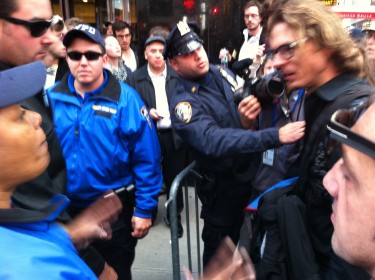
Some clashes between law enforcement forces and the press in Times Square. Picture by Robert Valencia for Global Voices, 2011
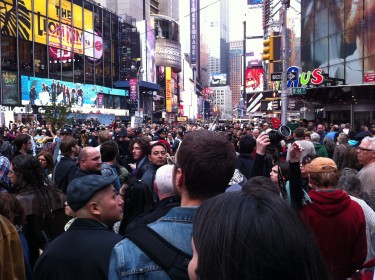
The protest flow didn't stop even with police presence. Photo by Robert Valencia for Global Voices, 2011
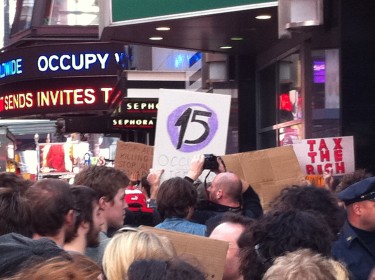
Sign with the number "15" in reference to October 15th protests. Photo by Robert Valencia for Global Voices, 2011
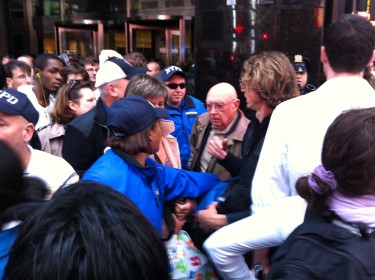
As the protest developed, the tensions between policemen and protesters grew. Picture by Robert Valencia for Global Voices, 2011
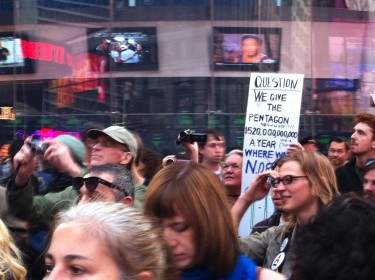
Protesters passing in front of the Nasdaq index in Times Square. Photo by Robert Valencia for Global Voices, 2011
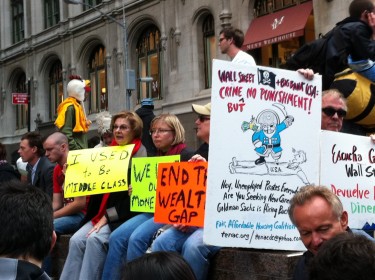
Meanwhile, some Occupy Wall Street protesters stayed at Zuccotti Park. Picture by Robert Valencia for Global Voices, 2011
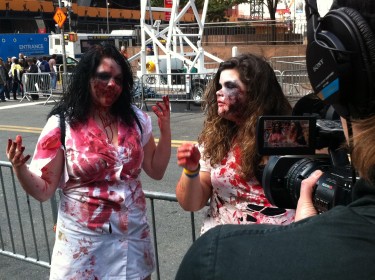
Women disguised as zombies took part of the protest. Photo by Robert Valencia for Global Voices, 2011
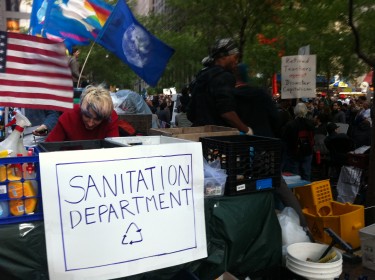
In Zucotti Park, also know now as Liberty Park, sanitation and food centers were placed. Photo by Robert Valencia for Global Voices, 2011
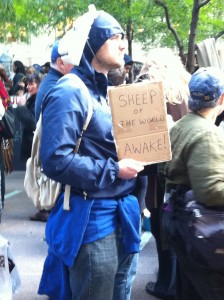
Protester with a sheep mask and a sign that says "Sheep of the world, awake". Photo by Robert Valencia for Global Voices, 2011
This post is part of our special coverage #Occupy Worldwide.

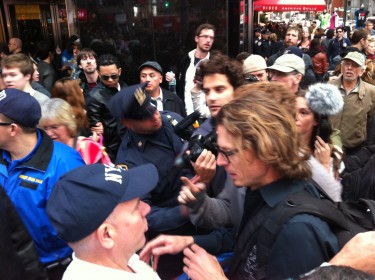
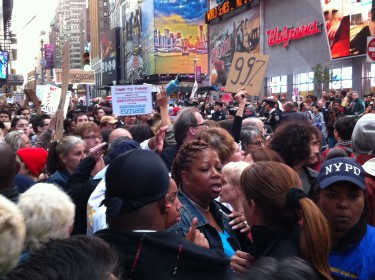
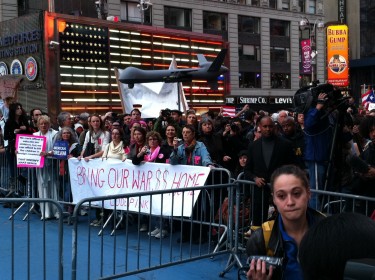
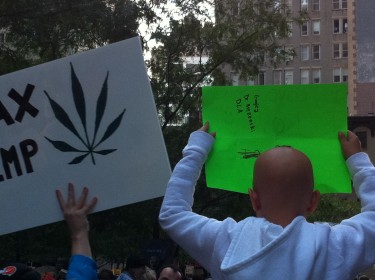




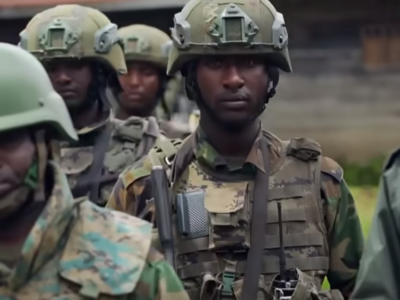

2 comments